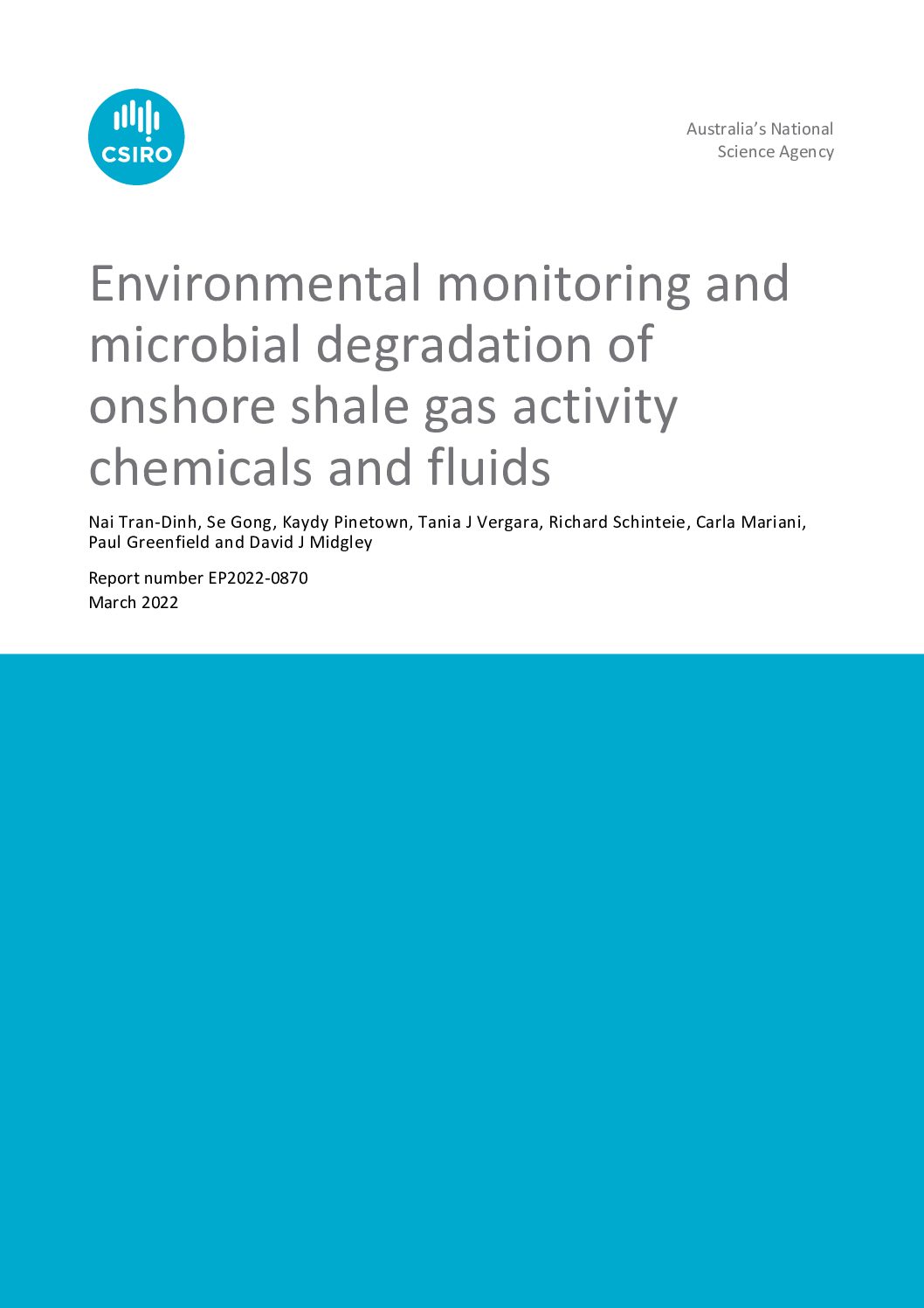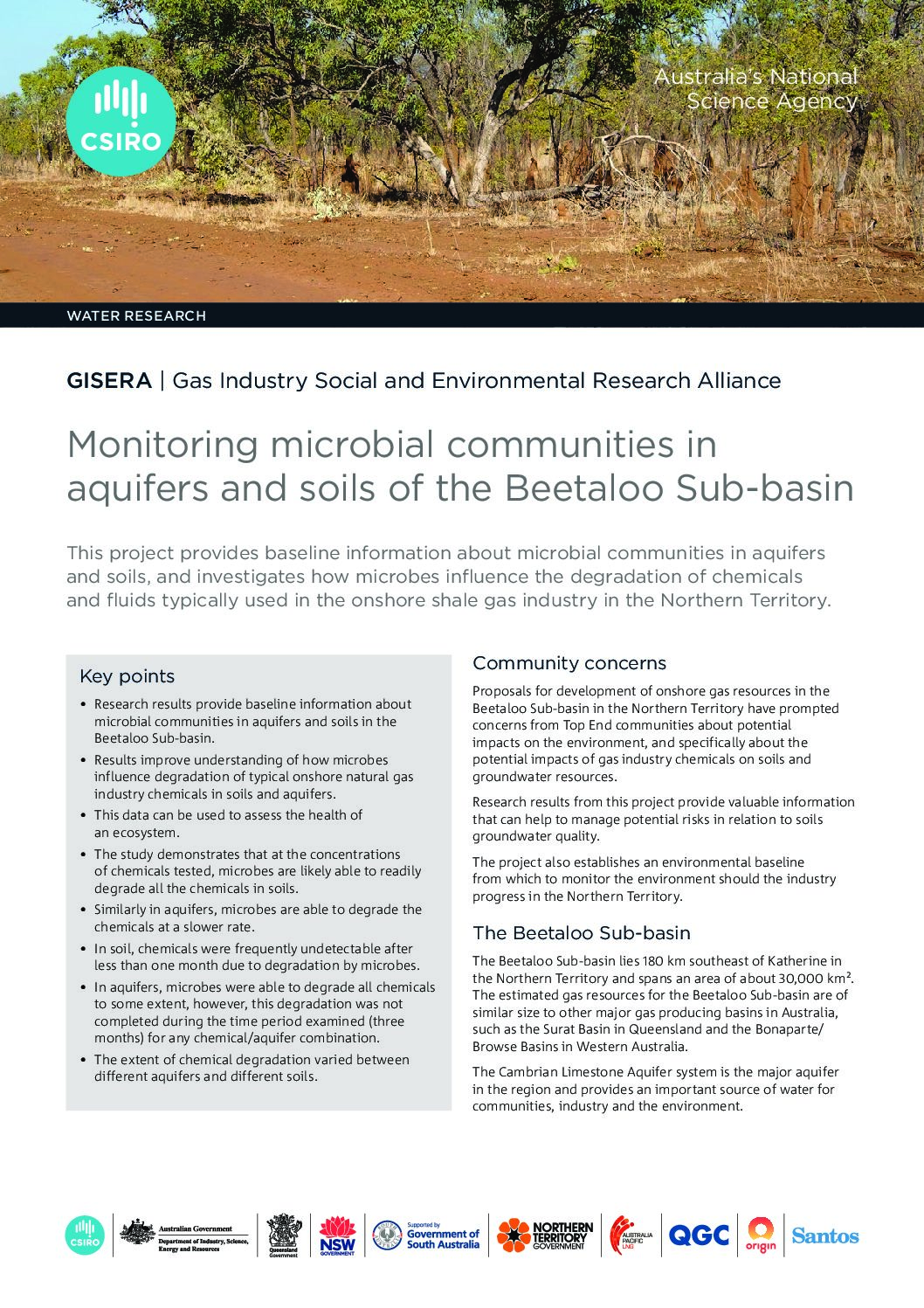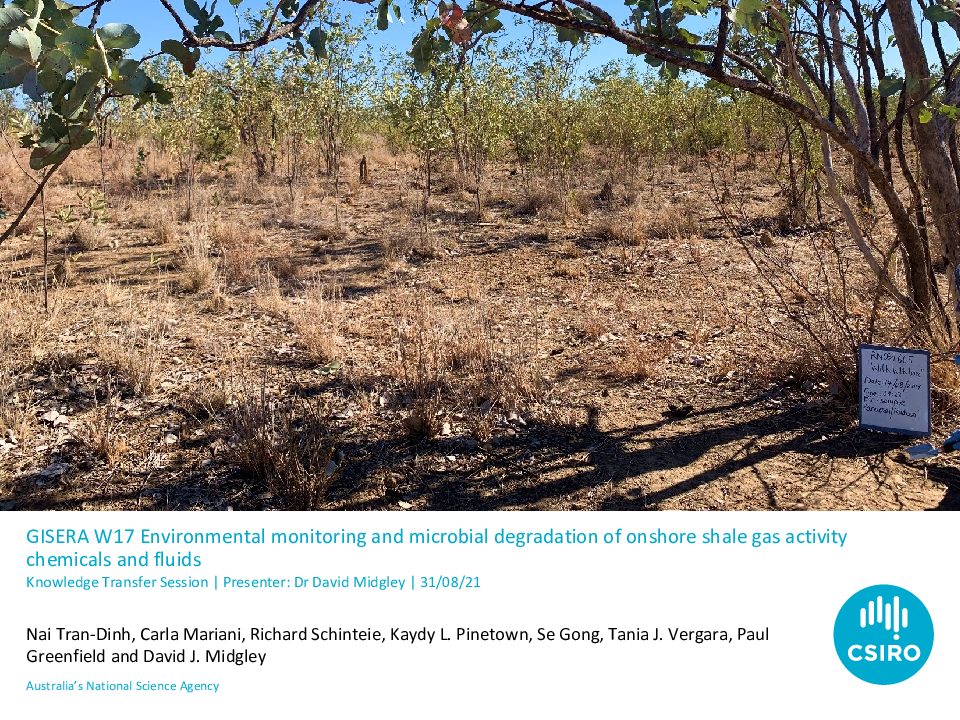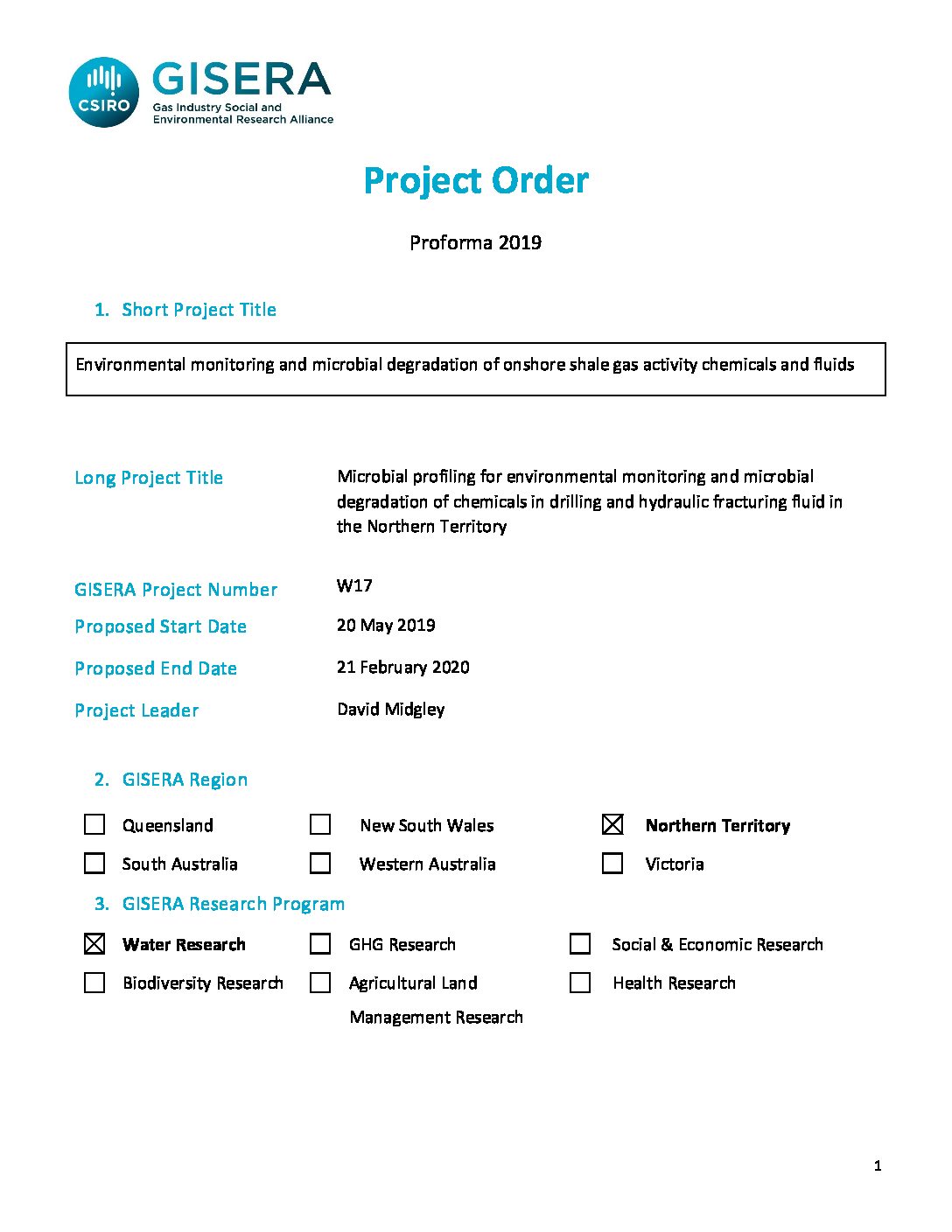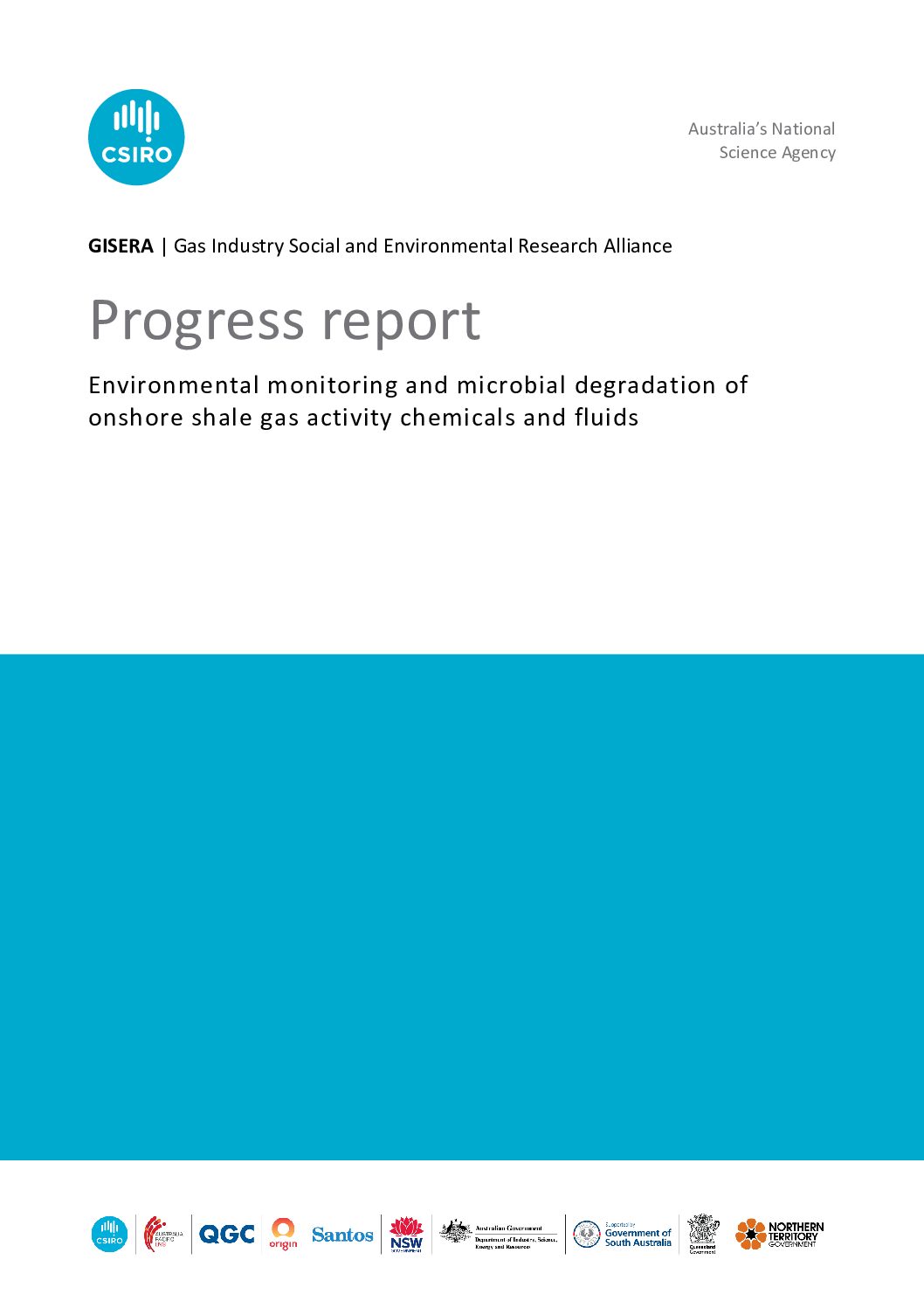Monitoring and microbial degradation of gas activity chemicals, NT
This research aimed to improve understanding of how typical onshore gas chemicals degrade in relevant aquifers and soil types.
Research results provide baseline information about microbial communities in aquifers and soils, and improve understanding of how microbes influence degradation of typical onshore chemicals in soils and aquifers. This data can be used to assess the health of an ecosystem.
Results include a detailed soil chemistry study of five soil samples, collected at geographically distant points and nominally representing chromosol, kandosol, rudosol, tenosol and vertosol soils of the Beetaloo Sub-basin region.
Results also provide detailed chemistry information for 38 bores of the region including those intersecting the formations of Gum Ridge, Tindall Limestone, Anthony Lagoon and Montijinni Limestone.
All chemicals tested for degradation using commercially available accredited tests were undetectable in soils after 34 days of incubation, due to microbial degradation. Degradation may have occurred at a faster rate, however, the single test conducted after 34 days precludes characterising the rate of degradation further.
In aquifer microcosms experiments, microbes were able to degrade all chemicals to some extent, however, this degradation was not complete during the time period examined (3 months) for any chemical/aquifer combination.
The study demonstrates that at the concentrations of chemicals tested, microbes are likely able to readily degrade all the chemicals in soils, and similarly in aquifers, microbes are able to degrade the chemicals at a slower rate.


